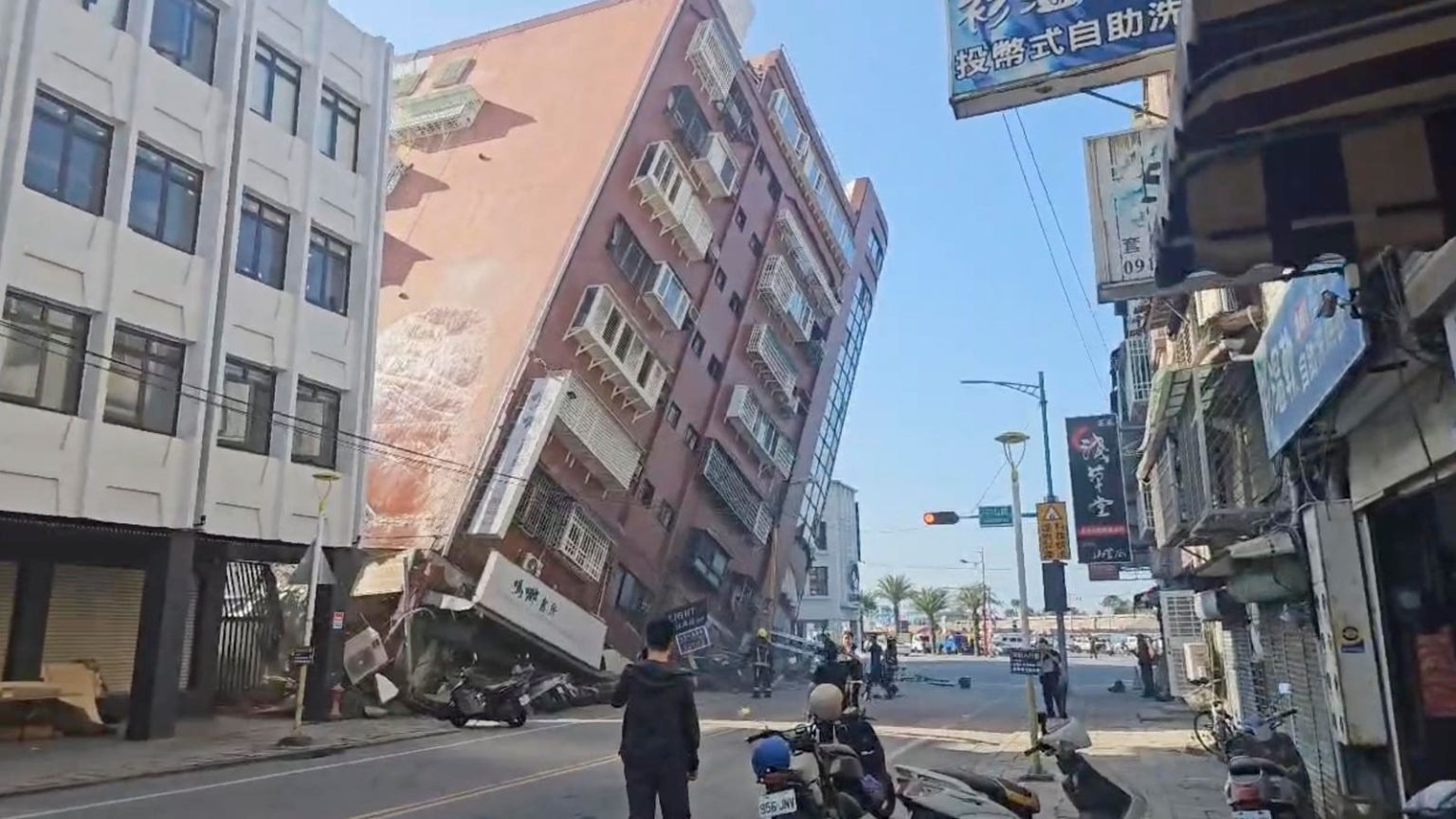Taiwan experienced its most powerful earthquake in over two decades on Wednesday morning, resulting in at least nine fatalities and severe damage to numerous buildings across the island. The epicenter of the quake was located in Hualien County on the east coast, with conflicting reports from the USGS and Taiwan’s monitoring agency on the magnitude, ranging from 7.2 to 7.4. The disaster caused the collapse of at least 26 structures and left more than 50 people injured, with dramatic images showing a five-story building in Hualien City leaning dangerously after its first floor collapsed.
Following the earthquake, a brief tsunami warning was issued for parts of Japan and the Philippines, but was later lifted as no major waves were detected. Taiwan’s President Tsai Ing-wen expressed gratitude for the support received from around the world and commended first responders for their efforts in saving lives. This earthquake marks the strongest to hit Taiwan since 1999, when a 7.6 magnitude quake caused over 2,400 deaths and extensive destruction. In 2018, Hualien was struck by a 6.4 magnitude earthquake that claimed at least 17 lives, and a year later, a 6.1 magnitude quake caused damage and one death in the region.
The earthquake also had implications for businesses, as TSMC, the world’s largest manufacturer of advanced chips, evacuated workers from some factories and paused machinery operations in response to the tremors. However, the company later confirmed that all employees were safe and many had returned to work. It remains uncertain whether the disruption will significantly affect the chipmaker’s operations. Shares in TSMC dropped 1.27% in afternoon trading in Taipei following the earthquake, as the company produces chips for major tech companies such as Apple and Nvidia.
The devastation caused by the earthquake in Taiwan has drawn attention to the country’s need for improved disaster preparedness and response measures. The government’s swift actions in mobilizing rescue efforts and providing assistance to affected areas have been crucial in mitigating further harm. As the nation continues to assess the extent of the damage and support those affected by the disaster, it is evident that collaboration with international partners and organizations will be essential in the recovery process.
In the aftermath of the earthquake, focus has shifted towards the rebuilding and reconstruction efforts in Hualien and other affected areas. The resilience of Taiwan’s communities in the face of such natural disasters is commendable, as they come together to support one another and work towards restoring normalcy. With memories of past earthquakes still fresh in the minds of many residents, the need for sustainable infrastructure and emergency response plans has become increasingly apparent in safeguarding the country against future calamities.
As Taiwan grapples with the aftermath of the devastating earthquake, the solidarity and resilience demonstrated by its people serve as a beacon of hope for the nation’s recovery. Despite the challenges posed by such a natural disaster, Taiwan’s determination to rebuild and support those in need showcases the strength and unity of its communities. Moving forward, continued efforts to enhance disaster preparedness and response capabilities will be crucial in safeguarding the country from similar tragedies in the future.


